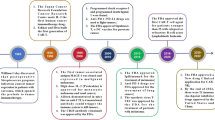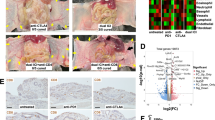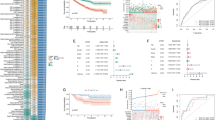Abstract
Hepatocellular carcinoma (HCC) is a complex heterogeneous disease with high morbidity and mortality. Recent progress in molecular targeted drugs including multikinase inhibitors and immune checkpoint inhibitors has demonstrated substantial survival improvement in patients with advanced HCC, but it remains as a challenging issue to discover surrogate markers for precisely distinguishing responders and non-responders. Genome-based medicine has changed cancer treatment from empirical use of cytotoxic agents to theoretical use of molecular targeted drugs in various types of cancer, while not in HCC due to lack of druggable targets. Integrated genomic and transcriptomic analysis reveal that HCC is divided into three major subtypes, proliferative, CTNNB1-mutated and metabolic disease-associated, with distinctive molecular and immunological features, and an increasing number of studies provide evidence for the close correlation between the subtype and the response to molecular targeted drugs using both of clinical data and preclinical models. Dozens of immunocompetent mouse models, such as hydrodynamic tail vain injection models and implantable syngeneic models, reflect molecular characteristics and tumor immune microenvironment of the subtypes, and help us to evaluate the efficacy of single and combination therapies and understand the molecular mechanisms underlying vulnerability and resistance to them. Thus, the consensus classification and relevant preclinical models could accelerate the establishment of predictive biomarkers and the development of subtype-specific therapies.



Similar content being viewed by others
References
Llovet JM, Kelley RK, Villanueva A et al (2021) Hepatocellular carcinoma Nat Rev Dis Primers 7:6
Llovet JM, Ricci S, Mazzaferro V et al (2008) Sorafenib in advanced hepatocellular carcinoma. N Engl J Med 359:378–390
Cheng A, Kang Y, Chen Z et al (2009) Efficacy and safety of sorafenib in patients in the Asia-Pacific region with advanced hepatocellular carcinoma: a phase III randomised, double-blind, placebo-controlled trial. Lancet Oncol 10:25–34
Llovet JM, Montal R, Sia D et al (2018) Molecular therapies and precision medicine for hepatocellular carcinoma. Nat Rev Clin Oncol 15:599–616
Kudo M, Finn RS, Qin S et al (2018) Lenvatinib versus sorafenib in first-line treatment of patients with unresectable hepatocellular carcinoma: a randomised phase 3 non-inferiority trial. Lancet 391:1163–1173
Bruix J, Qin S, Merle P et al (2017) Regorafenib for patients with hepatocellular carcinoma who progressed on sorafenib treatment (RESORCE): a randomised, double-blind, placebo-controlled, phase 3 trial. Lancet 389:56–66
Abou-Alfa GK, Meyer T, Cheng A et al (2018) Cabozantinib in patients with advanced and progressing hepatocellular carcinoma. N Engl J Med 379:54–63
Zhu AX, Kang Y, Yen C et al (2019) Ramucirumab after sorafenib in patients with advanced hepatocellular carcinoma and increased α-fetoprotein concentrations (REACH-2): a randomised, double-blind, placebo-controlled, phase 3 trial. Lancet Oncol 20:282–296
El-Khoueiry AB, Sangro B, Yau T et al (2017) Nivolumab in patients with advanced hepatocellular carcinoma (CheckMate 040): an open-label, non-comparative, phase 1/2 dose escalation and expansion trial. Lancet 389:2492–2502
Yau T, Park J, Finn RS et al (2022) Nivolumab versus sorafenib in advanced hepatocellular carcinoma (CheckMate 459): a randomised, multicentre, open-label, phase 3 trial. Lancet Oncol 23:77–90
Sangro B, Sarobe P, Hervás-Stubbs S et al (2021) Advances in immunotherapy for hepatocellular carcinoma. Nat Rev Gastroenterol Hepatol 18:525–543
Zhu AX, Finn RS, Edeline J et al (2018) Pembrolizumab in patients with advanced hepatocellular carcinoma previously treated with sorafenib (KEYNOTE-224): a non-randomised, open-label phase 2 trial. Lancet Oncol 19:940–952
Finn RS, Ryoo B, Merle P et al (2020) Pembrolizumab as second-line therapy in patients with advanced hepatocellular carcinoma in KEYNOTE-240: a randomized, double-blind, phase III trial. J Clin Oncol 38:193–202
Finn RS, Qin S, Ikeda M et al (2020) Atezolizumab plus bevacizumab in unresectable hepatocellular carcinoma. N Engl J Med 382:1894–1905
Fukumura D, Kloepper J, Amoozgar Z et al (2018) Enhancing cancer immunotherapy using antiangiogenics: opportunities and challenges. Nat Rev Clin Oncol 15:325–340
Bruix J, Cheng A, Meinhardt G et al (2017) Prognostic factors and predictors of sorafenib benefit in patients with hepatocellular carcinoma: analysis of two phase III studies. J Hepatol 67:999–1008
Topalian SL, Taube JM, Anders RA et al (2016) Mechanism-driven biomarkers to guide immune checkpoint blockade in cancer therapy. Nat Rev Cancer 16:275–287
Cheng A, Qin S, Ikeda M et al (2022) Updated efficacy and safety data from IMbrave150: atezolizumab plus bevacizumab vs. sorafenib for unresectable hepatocellular carcinoma. J Hepatol 76:862–873
Wang M, Herbst RS, Boshoff C (2021) Toward personalized treatment approaches for non-small-cell lung cancer. Nat Med 27:1345–1356
Schulze K, Imbeaud S, Letouzé E et al (2015) Exome sequencing of hepatocellular carcinomas identifies new mutational signatures and potential therapeutic targets. Nat Genet 47:505–511
Rebouissou S, Nault J (2020) Advances in molecular classification and precision oncology in hepatocellular carcinoma. J Hepatol 72:215–229
Lee J, Chu I, Heo J et al (2004) Classification and prediction of survival in hepatocellular carcinoma by gene expression profiling. Hepatology 40:667–676
Chiang DY, Villanueva A, Hoshida Y et al (2008) Focal gains of VEGFA and molecular classification of hepatocellular carcinoma. Cancer Res 68:6779–6788
Hoshida Y, Nijman SMB, Kobayashi M et al (2009) Integrative transcriptome analysis reveals common molecular subclasses of human hepatocellular carcinoma. Cancer Res 69:7385–7392
Boyault S, Rickman DS, Reyniès Ad et al (2007) Transcriptome classification of HCC is related to gene alterations and to new therapeutic targets. Hepatology 45:42–52
Sia D, Jiao Y, Martinez-Quetglas I et al (2017) Identification of an immune-specific class of hepatocellular carcinoma, based on molecular features. Gastroenterology 153:812–826
Shimada S, Mogushi K, Akiyama Y et al (2019) Comprehensive molecular and immunological characterization of hepatocellular carcinoma. EBioMedicine 40:457–470
Ziol M, Poté N, Amaddeo G et al (2018) Macrotrabecular-massive hepatocellular carcinoma: a distinctive histological subtype with clinical relevance. Hepatology 68:103–112
Calderaro J, Ziol M, Paradis V et al (2019) Molecular and histological correlations in liver cancer. J Hepatol 71:616–630
Kurebayashi Y, Matsuda K, Ueno A et al (2022) Immunovascular classification of HCC reflects reciprocal interaction between immune and angiogenic tumor microenvironments. Hepatology 75:1139–1153
Ueno A, Masugi Y, Yamazaki K et al (2014) OATP1B3 expression is strongly associated with Wnt/β-catenin signalling and represents the transporter of gadoxetic acid in hepatocellular carcinoma. J Hepatol 61:1080–1087
Pinyol R, Torrecilla S, Wang H et al (2021) Molecular characterisation of hepatocellular carcinoma in patients with non-alcoholic steatohepatitis. J Hepatol 75:865–878
Harding JJ, Nandakumar S, Armenia J et al (2019) Prospective genotyping of hepatocellular carcinoma: clinical implications of next-generation sequencing for matching patients to targeted and immune therapies. Clin Cancer Res 25:2116–2126
Morita M, Nishida N, Sakai K et al (2021) Immunological microenvironment predicts the survival of the patients with hepatocellular carcinoma treated with anti-pd-1 antibody. Liver Cancer 10:380–393
Ruiz de Galarreta M, Bresnahan E, Molina-Sánchez P et al (2019) β-catenin activation promotes immune escape and resistance to anti-pd-1 therapy in hepatocellular carcinoma. Cancer Discov 9:1124–1141
Akasu M, Shimada S, Kabashima A et al (2021) Intrinsic activation of β-catenin signaling by CRISPR/Cas9-mediated exon skipping contributes to immune evasion in hepatocellular carcinoma. Sci Rep 11:16732
Pfister D, Núñez NG, Pinyol R et al (2021) NASH limits anti-tumour surveillance in immunotherapy-treated HCC. Nature 592:450–456
Brown ZJ, Heinrich B, Greten TF (2018) Mouse models of hepatocellular carcinoma: an overview and highlights for immunotherapy research. Nat Rev Gastroenterol Hepatol 15:536–554
Bresnahan E, Lindblad KE, Ruiz de Galarreta M et al (2020) Mouse models of oncoimmunology in hepatocellular carcinoma. Clin Cancer Res 26:5276–5286
Connor F, Rayner TF, Aitken SJ et al (2018) Mutational landscape of a chemically-induced mouse model of liver cancer. J Hepatol 69:840–850
Aydinlik H, Nguyen TD, Moennikes O et al (2001) Selective pressure during tumor promotion by phenobarbital leads to clonal outgrowth of beta-catenin-mutated mouse liver tumors. Oncogene 20:7812–7816
Murakami H, Sanderson ND, Nagy P et al (1993) Transgenic mouse model for synergistic effects of nuclear oncogenes and growth factors in tumorigenesis: interaction of c-myc and transforming growth factor alpha in hepatic oncogenesis. Cancer Res 53:1719–1723
Harada N, Oshima H, Katoh M et al (2004) Hepatocarcinogenesis in mice with beta-catenin and Ha-ras gene mutations. Cancer Res 64:48–54
Wolf MJ, Adili A, Piotrowitz K et al (2014) Metabolic activation of intrahepatic CD8+ T cells and NKT cells causes nonalcoholic steatohepatitis and liver cancer via cross-talk with hepatocytes. Cancer Cell 26:549–564
Fujii M, Shibazaki Y, Wakamatsu K et al (2013) A murine model for non-alcoholic steatohepatitis showing evidence of association between diabetes and hepatocellular carcinoma. Med Mol Morphol 46:141–152
Horie Y, Suzuki A, Kataoka E et al (2004) Hepatocyte-specific Pten deficiency results in steatohepatitis and hepatocellular carcinomas. J Clin Invest 113:1774–1783
Itoh M, Suganami T, Nakagawa N et al (2011) Melanocortin 4 receptor-deficient mice as a novel mouse model of nonalcoholic steatohepatitis. Am J Pathol 179:2454–2463
Xue W, Chen S, Yin H et al (2014) CRISPR-mediated direct mutation of cancer genes in the mouse liver. Nature 514:380–384
Kimura T, Kato Y, Ozawa Y et al (2018) Immunomodulatory activity of lenvatinib contributes to antitumor activity in the Hepa1-6 hepatocellular carcinoma model. Cancer Sci 109:3993–4002
Lee J, Chu I, Mikaelyan A et al (2004) Application of comparative functional genomics to identify best-fit mouse models to study human cancer. Nat Genet 36:1306–1311
Chiyonobu N, Shimada S, Akiyama Y et al (2018) Fatty acid binding protein 4 (fabp4) overexpression in intratumoral hepatic stellate cells within hepatocellular carcinoma with metabolic risk factors. Am J Pathol 188:1213–1224
Funding
This work was supported by Grants-in-Aid for Scientific Research (A; 19H01055) and Challenging Research (Exploratory; 20K21627) from the Ministry of Education, Culture, Sports, Science and Technology of Japan; Research Grant from the Princess Takamatsu Cancer Research Fund; P-CREATE (JP19cm0106540), and Program for Basic and Clinical Research on Hepatitis (JP21fk0210090, JP20fk0210060) from AMED (Japan Agency for Medical Research and Development).
Author information
Authors and Affiliations
Corresponding author
Ethics declarations
Conflict of interest
The authors declare no potential conflicts of interest.
Additional information
Publisher's Note
Springer Nature remains neutral with regard to jurisdictional claims in published maps and institutional affiliations.
About this article
Cite this article
Shimada, S., Tanaka, S. Molecular targeted drugs, comprehensive classification and preclinical models for the implementation of precision immune oncology in hepatocellular carcinoma. Int J Clin Oncol 27, 1101–1109 (2022). https://doi.org/10.1007/s10147-022-02174-0
Received:
Accepted:
Published:
Issue Date:
DOI: https://doi.org/10.1007/s10147-022-02174-0




